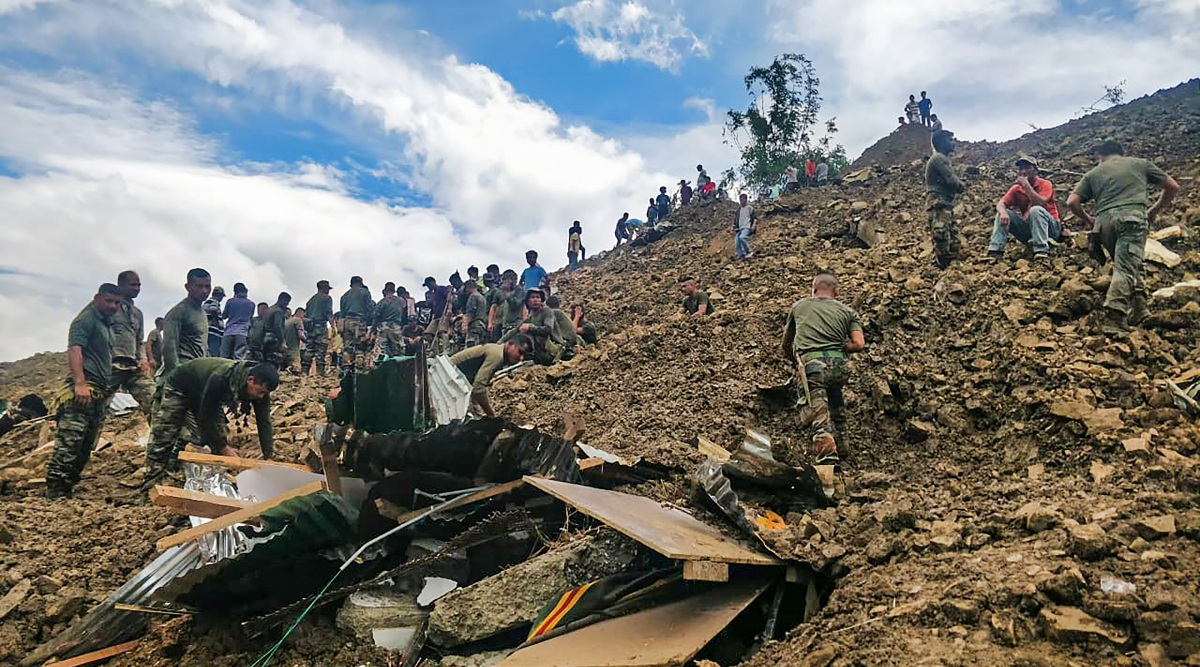The recent communal riots in Manipur have resulted in unparalleled human displacement, loss of life and property, and irreparable damage to Manipur’s geopolitical roots. To maintain future stability and peace, the truth about the nature of these riots and their primary cause must be confronted, and necessary measures must be taken to assure institutional accountability, acknowledgment, and accommodation of various rights and identities.

What is the principal cause?
- The refusal of the state government to recognise and accommodate the territorial claims and identities of the state’s many communities is the primary cause of the riots in Manipur.
- The aggressive integrationist effort of the state, which tries to destroy tribal land rights in valley areas, has been a major source of conflict between the Meitei and tribal populations.
- Furthermore, the lack of functional sub-state asymmetrical institutions, as well as the fragility of the state-society paradigm, have contributed to the state’s instability and ethnic security challenge.
What exactly are the Meiteis?
- The Meiteis are the state’s largest ethnic group.
- Language of the Community: They speak Meitei (officially Manipuri), one of India’s 22 official languages and the sole official language of Manipur State.
- Manipur is separated geographically into two parts: the Imphal Valley and the surrounding hills. The Meitei community dominates the Imphal Valley, accounting for more than 64% of the population. The hills, which cover 90% of Manipur’s land area, are home to more than 35% of the state’s recognised tribes, the majority of whom are Christians.
- Major Festivals: Meiteis festivals include Lai Haraoba, Cheiraoba, and Yaosang, among others. Furthermore, the Manipuri martial technique Thang-ta originated with the Meitei knights during the king’s reign.
Recognition and accomodation are required: Illustration
- Recognise territorial rights: The security and integrity of a pillarized society like Manipur can only be ensured via the acknowledgement of all communities’ territorial rights and identities. This entails acknowledging the Meiteis’ and tribals’ land rights and heritage in the hills.
- Substantive accommodation: In addition to recognition, various communities require substantive accommodation. This can include giving tribal populations more decision-making autonomy and representation in government.
- Genuine communication: Genuine dialogue between communities that is founded on mutual respect and a willingness to compromise is required for accommodation. This is critical for establishing confidence and lowering tensions.
- The culmination of forceful integrationist projects: The notion that one community should rule over another must give way to a more inclusive approach that celebrates diversity and recognises the rights of all communities.
- Working institutions: Accommodation necessitates that institutions operate efficiently and fairly. Manipur’s weak state-society model must be strengthened, and institutional trust and legitimacy must be restored.
- Respect for diversity: Recognising and accommodating differences necessitates a dedication to finding common ground. This can be aided by an understanding of the historical roots of existing sub-State constitutional imbalance, as well as a desire to address the needs of all populations.
In the future: Initiatives to Promote State-Building
- Strengthening state institutions: The state government should prioritise the development of strong and effective institutions capable of providing basic services to citizens, upholding law and order, and protecting the rights of all communities. This could include revamping the police force, enhancing administrative efficiency, and strengthening the court.
- Promoting inclusivity: The state government should make certain that all communities, tribal and non-tribal, have equal access to government services and are included in the political process. Implementing affirmative action legislation and encouraging discussion across diverse communities could be part of this.
- Improving infrastructure: To support economic growth and development, the state government should invest in infrastructure such as roads, water supply, and power. This has the potential to eliminate poverty and inequality while also improving the quality of life for all citizens.
- Addressing grievances: In order to foster trust and peace, the state administration should address the problems of various populations, especially land rights issues. This could include establishing a judicial panel to investigate past violence and hold those guilty accountable.
- Developing regional partnerships: The state government should collaborate with other states in the region as well as the federal government to promote regional cooperation and handle shared concerns. This could include increasing trade and investment, pooling resources, and working together on regional security challenges.
@the end
Serious and coordinated inter-community reconciliation initiatives must be launched immediately if Manipur as an inclusive concept and geopolitical space of accommodation is to be resurrected. Any lengthy conflagrations will be mutually harmful and counterproductive. The government must be fair when dealing with diverse communities and must not give in to majority pressure in the future.
Source: https://www.thehindu.com/opinion/lead/salvaging-the-idea-and-reality-of-manipur/article66831674.ece
